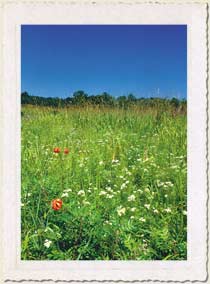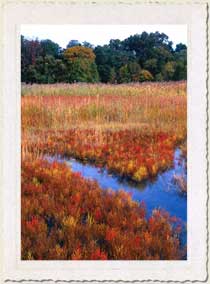
Pelham Bay Park
Pelham Bay Park Preserves
Borough: Bronx
Acres: 883
Habitat Type: Forest, Grassland, Freshwater Wetland, Salt Marsh
Map: PDF
More than three times the size of Manhattan’s Central Park, Pelham Bay Park is the City’s largest park property, including a breathtaking 13-mile saltwater shoreline that hugs the Long Island Sound. The Pelham Bay Park Preserves links two Forever Wild Nature Preserves – Thomas Pell Wildlife Refuge and Hunter Island Marine Sanctuary. This area includes mature oak forest, meadows, salt marsh, and the southernmost outcropping of rocky intertidal habitat (a rare community in New York State). More than 400 species of birds, mammals, reptiles, amphibians, fish, and insects have been spotted in Pelham Bay Park. Some of the more elusive and noteworthy include: the clapper rail, a long-billed marsh bird the size of a chicken; northern diamondback terrapins, which have been sighted in the Hutchinson River during spring; and Amphipoea erepta ryensis , a moth with light reddish-brown fore wings an straw-colored hind wings rediscovered in Goose Creek Marsh in 1975, when it was thought to have been extirpated.
Nearly 200 acres of salt marsh make Pelham Bay Park the largest assemblage of tidal wetlands in the City outside of Jamaica Bay. The three major marshes, fed by Goose Creek, the Hutchinson River, and the Lagoon, offer fertile mud flats and salt grasses to scores of wildlife. Salt marshes also play a critical role in the support of human life, acting as natural filtration systems by trapping pollutants that would otherwise contaminate our bays and oceans. Salt marshes have the ability to absorb fertilizers, improve water quality, and reduce erosion.
In an area where hydrology and soil had been disturbed and the invasive Phragmites australis had dominated, the Natural Resources Group (NRG) completed a 3-acre salt marsh restoration in Fall of 2000. As one of the 20 most invasive plants in New York State, phragmites (Phragmites australis) , also known as the common reed or “phrag,” have become a ubiquitous part of New York City’s landscape. This aggressive reed outcompetes any pre-existing vegetation, leading to thick, choking stands that can grow to 15-feet high. Phragmites is considered to be a “cosmopolitan” species – one that grows throughout the world – but in recent years it has become particularly invasive, taking over other species’ habitats. Overall, phragmites provides poorer nutrition than the plant species it replaces. Although the thick strands provide good thermal cover for molting waterfowl, most birds do not nest where there is an abundance of phragmites, leading to dwindling bird populations. Phragmites adjacent to a salt marsh usually grows above the daily tides, limiting fish spawning habitat. NRG re-introduced tidal flow and planted salt marsh cordgrass (Spartina alterniflora) , which is very salt-tolerant, thereby restricting Phragmites growth. This project was funded by the New York State Clean Water/Clean Air Bond Act and the City of New York.
Photographs
Directions
Subway: 6 train to Pelham Bay Park Station Bus: Bx 12, Bx 29, Bx 5, Bx 52, and Westchester line No. 45 serve the park.
Car: The Bruckner Expressway/New England Thruway has two park exits, Country Club Road/Pelham Bay Park and Orchard Beach/City Island. Or off the Hutchinson River Parkway, exit at Pelham Parkway East and Orchard Beach/City Island. Pelham Parkway serves as a crosstown route to the green space.

